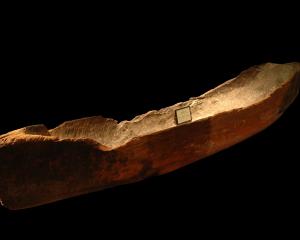
Have you ever wondered where in the city of Dunedin you can see the perfect intersection of art and science? Well, up on the third level of the museum in the Nature Gallery, there is a hallway unlike any other. Dedicated to Lyn and Ray Forster, who were renowned arachnologists and important museum contributors, it highlights the broad range of habitats and incredible biodiversity near our city.

The hallway features a number of exquisite dioramas that beautifully combine nature and art. Curator Tony Harris produced their original designs, oversaw the bulk of the research, and did much of the planning, design and collecting work that was required to bring these models to fruition.
At the atrium end of the hallway, the first diorama you encounter is a forest scene, which happens to be the oldest interactive exhibit in the museum — even predating the original Discovery World. Peering into the display, you can see the stump of a tree and a still-life example of a thriving native forest floor.
Insects are dotted around the scene, hidden among the reproduced plants until you push a button and a small LED gives them away with its red glow. Incredibly, these lights have never failed since their installation in 1988.
Where this diorama differs from the real world is the number of highlights concentrated in one small space. It includes the South Island lichen moth (famous for being on the $100 note), a giraffe weevil, caterpillars infected with the Cordyceps fungus, a giant ichneumonid wasp, stick insects, a leaf-veined slug, and several spider species. Keen-eyed visitors may even spot a lurking insectivore, the tītitipounamu (rifleman), which is Aotearoa’s tiniest native bird.

Other diorama scenes include a rocky beach reminiscent of those bordering Otago Peninsula; a high-country landscape based on the Rock and Pillar Range; and rolling fields of tussock inspired by the Whare Flat end of the Pineapple Track, part of which forms the skyline of the city. Lloyd Esler modelled the native plants and foliage out of more stable materials, while Lindon Cowell painted the realistic backdrops that are critical to the beauty of these excellent still-life scenes.
Each of these dioramas has a number of invertebrates to spot (they’re what you can expect to find if you visit these places in the wild) and a quick species list to help with identification. The more you look, the more you’ll see, and if you spend time immersing yourself in these displays, you’ll enjoy these wild places in our city even more.
Kane Fleury is curator, natural science at Tūhura Otago Museum.












